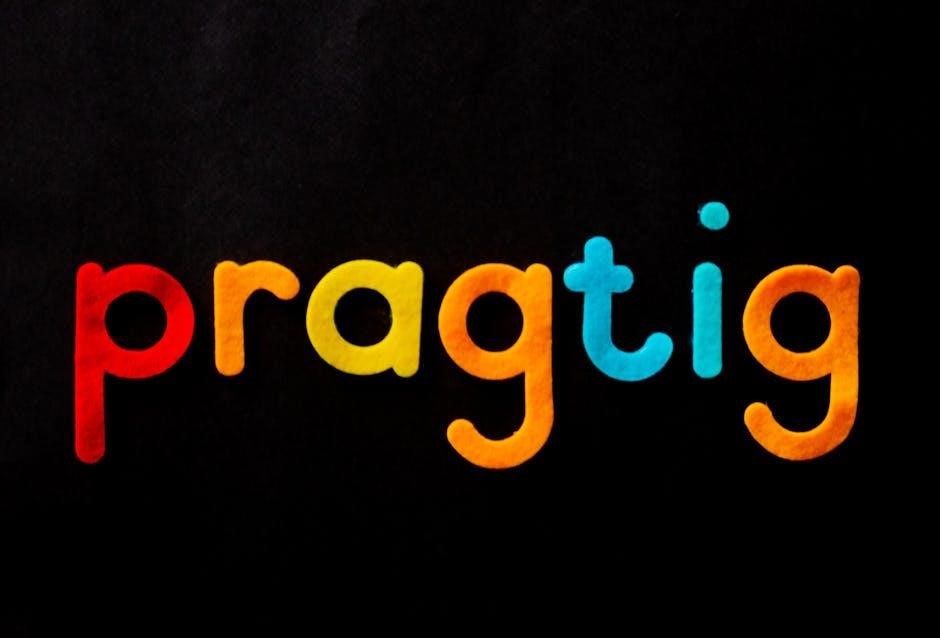the complete power bi interview guide pdf
This comprehensive guide provides in-depth preparation for Power BI interviews, covering basics, advanced topics, and real-world scenarios. It includes expert tips, common questions, and practical examples to help you excel.
1.1 Overview of the Guide
This guide is a comprehensive resource designed to help professionals prepare for Power BI interviews. It covers essential topics such as data visualization, DAX formulas, Power Query, and advanced analytics. The guide includes over 90 frequently asked questions, expert answers, and practical examples to ensure readiness for technical assessments. It also provides tips for acing interviews, including behavioral and scenario-based questions. Suitable for all experience levels, the guide bridges theory and practice, making it a valuable tool for anyone aiming to excel in Power BI roles.
1.2 Importance of Power BI in Data Analytics
Power BI is a transformative tool in data analytics, enabling organizations to turn raw data into actionable insights. Its user-friendly interface and robust capabilities make it accessible to both technical and non-technical users. Power BI empowers businesses to make data-driven decisions, enhance operational efficiency, and uncover hidden trends. By integrating seamlessly with Microsoft tools like Excel and Dynamics, it streamlines workflows and boosts productivity. Its real-time analytics and scalable solutions cater to organizations of all sizes, making it indispensable for modern business intelligence needs.
1.3 Target Audience for the Guide
This guide is designed for aspiring and experienced professionals seeking to excel in Power BI roles. It caters to data analysts, business intelligence developers, and data scientists. Whether you’re a fresher aiming to land your first job or a seasoned expert looking to advance, this resource provides tailored insights. The guide also benefits IT professionals transitioning into data analytics and business users leveraging Power BI for decision-making. Its comprehensive coverage ensures all skill levels gain valuable knowledge to succeed in their careers and technical interviews.

Power BI Basics
Power BI is a Microsoft business analytics tool enabling data visualization and insights. This section covers its definition, components, and core functionalities for beginners.
2.1 What is Power BI?
Power BI is a Microsoft business analytics tool enabling data visualization and insights. It transforms raw data into interactive dashboards and reports, helping organizations make informed decisions. Designed for business users, Power BI supports various data sources, including Excel, SQL, and cloud-based platforms. Its user-friendly interface allows non-technical users to create visualizations and gain insights efficiently. Power BI is widely used in industries for its scalability, affordability, and integration with Microsoft products, making it a powerful solution for data-driven decision-making. It bridges the gap between data analysis and business strategy, empowering users to uncover trends and opportunities effectively.
2.2 Key Components of Power BI
Power BI comprises three main components: Power BI Desktop, Power BI Service, and Power BI Mobile. Power BI Desktop is used for creating and designing reports, while Power BI Service is a cloud-based platform for publishing and sharing dashboards. Power BI Mobile enables on-the-go access to reports. Additionally, Power Query handles data transformation, Power Pivot manages data modeling, and DAX is used for advanced calculations. Together, these components provide a robust platform for data analysis, visualization, and collaboration, catering to diverse business needs and ensuring seamless data-driven decision-making across organizations.
2.3 Power BI Desktop vs. Power BI Service vs. Power BI Mobile
Power BI Desktop is a desktop application used for creating and designing reports, offering advanced data modeling and visualization tools. Power BI Service is a cloud-based platform for publishing, sharing, and managing dashboards, enabling collaboration. Power BI Mobile provides access to reports on-the-go, ensuring flexibility. While Desktop focuses on creation, Service on sharing, and Mobile on accessibility, they integrate seamlessly, allowing users to create, share, and consume data insights across devices. This trio empowers businesses to make data-driven decisions efficiently, regardless of location or device.
Power BI Interview Questions for Beginners
This section covers essential questions for newcomers, focusing on general Power BI concepts, data sources, and foundational skills to build a strong understanding of the tool.
3.1 General Power BI Questions
These questions assess your foundational knowledge of Power BI, covering its definition, key components, data sources, and core functionalities. Examples include explaining Power BI’s purpose, its primary tools, and common use cases. Understanding these basics is crucial for demonstrating your proficiency and readiness to tackle more complex topics. This section ensures you have a solid grasp of the platform before moving on to advanced concepts, making it essential for both new learners and experienced professionals preparing for interviews.
3.2 Data Sources and Connectivity Modes
Understanding the various data sources and connectivity modes is vital for working with Power BI. Common sources include databases, Excel files, cloud services, and big data platforms. Connectivity modes like DirectQuery, Import, and Live Connection are essential for managing data access and performance. Interview questions often focus on these topics to assess your ability to connect and optimize data sources effectively. Familiarity with these concepts ensures seamless data integration, a critical skill for any Power BI professional. This section helps you master the fundamentals of data connectivity, a key area in Power BI interviews.
3.3 Building Blocks of Power BI
The building blocks of Power BI include its core components like Power BI Desktop, Service, and Mobile. These tools work together to enable data transformation, analysis, and visualization. Understanding how these elements integrate is crucial for creating effective reports and dashboards. Additionally, the foundation of Power BI relies on data modeling, DAX calculations, and visualizations to present insights clearly. This section delves into the essential parts of Power BI, helping you grasp the framework needed to build and share impactful business intelligence solutions. Mastering these fundamentals is key to excelling in Power BI development and analysis.
Advanced Power BI Topics
This section explores advanced Power BI features like data modeling, DAX formulas, Power Query, and AI integration, essential for expert-level analytics and problem-solving.
4.1 Data Modeling in Power BI
Data modeling in Power BI is crucial for creating efficient and scalable datasets. It involves designing tables, relationships, and measures to optimize performance and accuracy. Key aspects include understanding data granularity, creating star schemas, and using DAX calculations. Proper data modeling ensures data integrity and supports advanced analytics. This section covers best practices for structuring data, managing relationships, and optimizing models for performance. Mastering these techniques is essential for delivering actionable insights and supporting complex business scenarios effectively.
4.2 DAX Formulas and Calculations
DAX (Data Analysis Expressions) is a powerful formula language used in Power BI for calculations and data analysis; It enables the creation of measures, calculated columns, and tables to derive insights. Common functions include SUM, AVERAGE, and CALCULATE, which handle aggregation and context manipulation. Understanding row vs. filter context is vital for accurate calculations. Best practices involve optimizing DAX for performance, avoiding circular references, and using variables effectively. Mastering DAX is essential for creating dynamic and scalable models, ensuring precise and actionable data-driven decisions in Power BI reports and dashboards.
4.3 Power Query and Data Transformation
Power Query is a powerful tool in Power BI for data transformation and preparation. It allows users to clean, merge, and shape datasets from various sources. Key functions include data loading, transforming, and merging, enabling the creation of structured data models. Understanding M language is essential for advanced transformations. Best practices involve optimizing queries for performance and minimizing data volume. Troubleshooting common issues like data type mismatches and null values is crucial. Mastery of Power Query ensures robust and scalable data preparation, enhancing overall Power BI model efficiency and accuracy for comprehensive data analysis and visualization.

Power BI Visualization Best Practices
Effective visualizations simplify data complexity, ensuring clarity and readability. Use intuitive charts, consistent colors, and clear labels. Optimize dashboards for interactivity with filters and slicers to enhance user insights.
5.1 Creating Effective Dashboards
Designing effective dashboards in Power BI requires a focus on clarity and user experience. Start by defining clear objectives and ensuring data is organized logically. Use intuitive visuals like bar charts, line graphs, and maps to simplify complex data. Avoid clutter by limiting the number of elements and using consistent colors and fonts. Ensure interactivity with filters and slicers, allowing users to drill down into details. Optimize layouts for readability on both desktop and mobile devices. Regularly test and refine your dashboards based on user feedback to maximize their impact and utility.
5.2 Using Filters and Slicers
Filters and slicers are essential for enhancing interactivity in Power BI dashboards. Filters allow users to narrow down data based on specific criteria, while slicers provide a visual way to segment data. Use filters to restrict data to a particular range or category, and slicers to enable users to select specific values dynamically. Implementing them effectively improves user experience by making reports more intuitive and actionable. For example, use dropdowns or checkboxes for filters and interactive buttons for slicers. This ensures users can easily drill down into relevant data without overwhelming them with information.
5.3 Design Principles for Reports
Designing effective Power BI reports involves balancing aesthetics and functionality. Use consistent color schemes, clear typography, and logical layouts to ensure readability. Avoid clutter by prioritizing key metrics and visuals. Implement intuitive navigation and interactive elements like tooltips for deeper insights. Adhere to best practices for data visualization, such as using appropriate chart types for specific data. Ensure accessibility by providing alt text for visuals and using high-contrast colors. These principles enhance user experience and communicate data effectively. Demonstrating a strong understanding of these principles in an interview showcases your ability to create impactful and user-friendly reports.

Scenario-Based Power BI Interview Questions
Scenario-based questions assess your ability to apply Power BI in real-world challenges. Examples include designing dashboards for specific business needs or troubleshooting data visualization issues.
6.1 Example Projects and Challenges
This section provides real-world examples of Power BI projects, such as creating sales dashboards or analyzing customer trends. It highlights common challenges, like data inconsistency or performance issues, and offers practical solutions. Readers learn how to handle complex datasets, optimize reports, and deliver actionable insights. These examples simulate actual interview scenarios, helping you demonstrate problem-solving skills and technical expertise. By reviewing these case studies, you can confidently discuss your approach to overcoming challenges and achieving business impact through Power BI.
6.2 Solving Real-World Business Problems
Power BI is widely used to address real-world business challenges, such as sales forecasting, customer segmentation, and operational efficiency. This section explores how Power BI tools can transform raw data into actionable insights, enabling organizations to make informed decisions. By leveraging data visualization and analytics, professionals can identify trends, optimize processes, and drive growth. Examples include improving supply chain management or enhancing customer satisfaction through data-driven strategies. Mastering these techniques demonstrates your ability to solve complex problems, making you a valuable asset in any organization.
6.3 Impact of Power BI on Business Decision-Making
Power BI empowers businesses to make data-driven decisions by transforming complex data into actionable insights. Its interactive dashboards and real-time analytics enable organizations to respond swiftly to market changes. By providing a unified view of data, Power BI enhances collaboration and aligns decision-making across departments. This leads to improved operational efficiency, better strategic planning, and a competitive edge in the market. Ultimately, Power BI plays a pivotal role in driving informed decision-making, helping businesses achieve their goals effectively.

Power BI Tools and Features
Power BI offers tools like Power Pivot, Power Map, and Power Query, enabling advanced data analysis and visualization. It also supports collaboration and AI integration for informed decision-making.
7.1 Power Pivot and Power Map
Power Pivot enhances data modeling by enabling advanced calculations and data analysis. Power Map visualizes geospatial data, transforming datasets into interactive 3D maps. Together, they provide powerful insights, making complex data accessible and actionable for decision-making.
7.2 Advanced Analytics and AI Integration
Power BI integrates advanced analytics and AI to uncover deeper insights. AI-driven features like automated insights and predictive analytics enable users to forecast trends and identify patterns. Machine learning integration enhances data modeling, while natural language querying simplifies complex analysis. These tools empower users to make data-driven decisions, transforming raw data into actionable strategies. The combination of advanced analytics and AI capabilities positions Power BI as a cutting-edge solution for modern business intelligence needs.
7.3 Collaboration and Sharing in Power BI
Power BI facilitates seamless collaboration and sharing, enabling teams to work together effectively. Features like shared dashboards, workspaces, and permissions ensure data accessibility and security. Users can publish reports to the Power BI Service, share insights via links or emails, and collaborate in real-time. Integration with Microsoft Teams enhances teamwork, while version control and comments streamline feedback. These features make Power BI an ideal platform for fostering collaboration and driving informed decision-making across organizations.
Behavioral and Technical Questions
This section covers common behavioral questions, problem-solving techniques, and technical assessments. It helps candidates showcase their analytical skills, teamwork, and ability to handle real-world challenges effectively.
8.1 Common Behavioral Questions
Behavioral questions assess your problem-solving skills, teamwork, and communication. Examples include describing a successful Power BI project, challenges faced, and your role in solving them. Employers seek candidates who can articulate their approach to data visualization, collaboration, and decision-making. Be prepared to discuss specific scenarios where you handled complex data, optimized performance, or translated insights into actionable strategies. Highlighting your adaptability, creativity, and ability to work under pressure is crucial. These questions help employers evaluate how you align with their team and business goals, ensuring you can thrive in real-world analytical environments and contribute effectively to their organization.
8.2 Technical Assessments and Problem-Solving
Technical assessments evaluate your hands-on expertise in Power BI, focusing on data modeling, DAX formulas, and Power Query. Expect scenario-based questions, such as optimizing data models or troubleshooting performance issues. Problem-solving exercises may involve creating visualizations or writing DAX calculations. Demonstrating logical thinking and proficiency in handling complex datasets is key. Be ready to explain your approach to common challenges, like data transformation or connectivity issues. Practice with real-world examples and mock interviews will help you confidently showcase your technical skills and ability to solve practical business problems effectively.
8.3 Tips for Acing the Interview
To excel in your Power BI interview, prepare thoroughly by practicing mock interviews and reviewing common questions. Demonstrate confidence and clarity in explaining your thought process. Highlight your problem-solving skills and experience with real-world projects. Showcase your technical expertise in data modeling, DAX, and Power Query. Emphasize soft skills like communication and teamwork; Stay updated on the latest Power BI features and best practices. Continuous learning and a proactive attitude will set you apart. Use storytelling techniques to illustrate your achievements and how they align with the role. This holistic approach will help you make a lasting impression.
Mastering Power BI requires continuous learning and practice. Utilize the complete guide PDF for expert tips and resources to advance your skills and secure your dream role.
9.1 Summary of Key Concepts
The guide covers essential Power BI concepts, including data modeling, DAX formulas, and visualization best practices. It emphasizes practical applications and real-world scenarios, ensuring a holistic understanding of Power BI tools and techniques. By mastering these concepts, professionals can effectively analyze data, create impactful reports, and drive informed decision-making. The comprehensive approach ensures readiness for various interview questions, from basic to advanced levels, making it an invaluable resource for aspiring Power BI professionals.
9.2 Continuous Learning and Growth
Continuous learning is crucial for mastering Power BI, as the tool evolves with new features and updates. Professionals must stay informed about best practices, advanced analytics, and emerging trends. Leveraging resources like Microsoft’s official documentation, community forums, and training courses can enhance skills. Regular hands-on practice and real-world projects reinforce knowledge. Networking with peers and mentors provides valuable insights and tips. Investing time in continuous learning ensures adaptability and growth, keeping you competitive in the dynamic field of data analytics and visualization.
9.3 Final Tips for Success
To excel in your Power BI interview, stay confident and passionate about your work. Highlight your hands-on experience and problem-solving skills. Research the company’s needs to align your responses with their goals. Showcase your ability to translate data into actionable insights. Practice answering behavioral and technical questions, and review common Power BI interview queries. Emphasize soft skills like communication and collaboration, as they are equally important. Stay updated with the latest Power BI features and trends. Continuous learning and a proactive approach will set you apart and pave the way for a successful career in data analytics.
























































